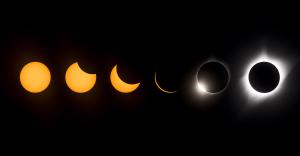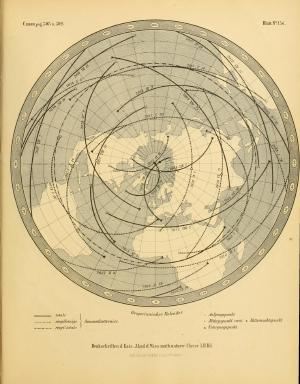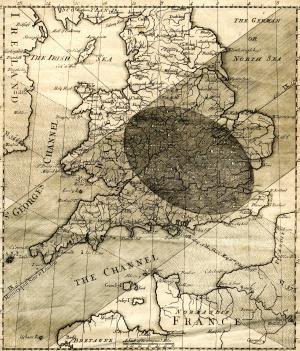Blog
Shadow of Time
12 June 2019
 U.S. Air Force, Staff Sgt. Christopher Ruano
U.S. Air Force, Staff Sgt. Christopher RuanoAs I write this, the Moon is shining brightly outside my window. It’s in the first quarter phase at the moment, where you can see half of its surface iluminated by the hidden Sun, the other half in shadow. Over the next week, it will wax to its full phase, then wane for the rest of the month. By the 2nd of July it will reach it will be a new moon, passing between the Earth and Sun. And on that day it will cast a shadow upon the Earth. The darkest part of the shadow will pass across northern Chile, creating a total solar eclipse.
 Theodor von Oppolzer
Theodor von OppolzerFor about a year that date has been marked in my calendar. Since then I’ve been making various arrangements to be in the path of totality. Others have been making plans for years. Come July, people from all over the world will flock to Chile to stand in the shadow of the Moon for a brief moment of time.
The date and location of this South American eclipse has been known since the late 1800s. In 1887 Theodor von Oppolzer published his great Canon der Finsternisse (Canon of Eclipses) which listed all solar and lunar eclipses between 1207 BC and 2161. It was a huge computational achievement.
 Edmond Halley
Edmond HalleyThroughout much of recorded history astronomers have calculated paterns, or cycles, in solar eclipses. By 20 BC Chinese astronomers had calculated a 135-month pattern now known as the tritos cycle. Ancient Mayans noted a similar pattern in eclipses. Around the same time astronomers in Mesopotamia calculated a 223-month Saros cycle. These patterns and others allowed early astronomers to predict a solar eclipse to the day. But they couldn’t predict where the Moon’s shadow would fall, the so-called path of totality. Because of Earth’s rotation, your calculations are off by even an hour, your predicted path of totality will be off by hundreds of miles.
The first truly accurate prediction of an eclipse was made by Edmond Halley. He predicted the path of totality across England for the eclipse of 22 April 1715. His prediction wasn’t perfect, but it was accurate to within 20 miles of the observed path. Accurate observations of other eclipes allowed astronomers to refine predictions. Within a century, accurate predictions of eclipses were routine.
Eclipses were once seen as dark omens, which is perfectly understandable. It must have been terrifying to see the Sun grow suddenly dark without understanding its cause. But such powerful events also call to us. Having observed an eclipse, early astronomers strove to understand them. That curiosity and drive is part of what makes us human. It’s why so many people flock to the location of an eclipse. But that’s a story for another time.